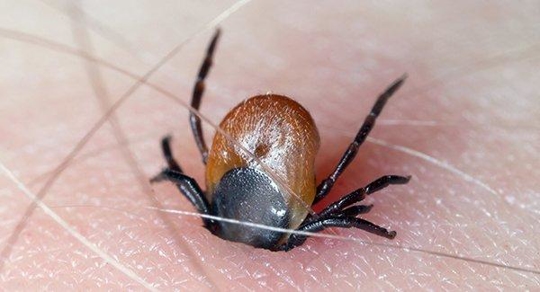When it comes to avoiding these nefarious backyard pests, you may try to run, but you certainly can’t hide. The tick problems here in Maine are increasing. With more and more species spreading into the northern states each year, the threats related to bites and tick-borne illnesses are on a steady rise. A short list of the species that currently reside in the northeast states are:
- Deer Ticks
- Lone Star Ticks
- Black-Legged Ticks
- American Dog Ticks
- Groundhog Ticks
By waiting in tall grasses and thick shrubbery, these blood-sucking pests have optimized a technique for latching on to passing hosts. Ticks climb to the edges of busy thoroughfares, including hiking trails, garden beds, and sidewalks. This gives them the highest chance of stumbling across new 'food.' Waving their six legs about and stretching towards the host, this ‘questing’ behavior of ticks allows these arachnids to survive and thrive in nearly any environment.
While most insects that suck blood are considered dangerous by the CDC, ticks in particular pose a rising threat to human health and safety. Thankfully, not all tick bites will lead to illness or chronic disease. An list of the tick-borne illnesses found in Maine include:
- Lyme Disease
- Anaplasmosis
- B. miyamotoidisease
- Ehrlichiosis
- Babesiosis
- Powassan virus
- Tularemia
- Heartland virus
- Bourbonvirus
- Southern tick-associated rash illness (STAR)
- Rocky Mountain spotted fever
If you have been bitten by a tick, the first course of action is not to panic. It takes several hours or even days for a pathogen to pass from a tick into your bloodstream. Carefully apply alcohol or dish soap to the pest and massage it with a gloved finger until the tick detaches. If the pest will not voluntarily detach itself, use a pair of strong tweezers. It is important to ensure that the head is fully removed to lower your chances of infectious disease. If you are concerned about your potential for catching a tick-borne illness, consult a trusted healthcare professional.
Reducing Tick Populations With Cultural Controls
Reemerging ticks are a terrifying annual prospect of springtime weather, but there are several things homeowners can do right now to reduce their probabilities of harboring large populations.
- Ticks love places where they can hide away from human sight. Reduce these locations on your lawn by keeping grasses short, shrubbery pruned, and vegetation cut back from the sides of the home.
- Rake up and remove all leaf piles before the start of the spring season. Moist, stagnant leaves give ticks ample hiding places to survive and thrive.
- Homes with large wooded areas on the property should consider installing a small 3 foot barrier between trees and their lawn. Mulches, peat gravel, and other substances are often too difficult for the ticks to traverse, and will significantly cut back your risk for bites.
Concerned that a tick infestation has already attached itself to your property? Get the home inspection you need with Big Blue Bug Solutions.
Tamp Down Your Tick Control With Big Blue Bug Solutions
Ticks are tough pests that require equally tough solutions to root out. That's why it’s important to contact Big Blue Bug Solutions about our Mosquito & Tick Control Program at the first signs of warm weather. To fight back against encroaching pests, rely on the trusted experts at Big Blue Bug Solutions. Our knowledgeable experts and helpful service members are available by phone and our online contact form to assist you with all your tick-related needs. Reach out to us now for a tick-free home all summer long!

